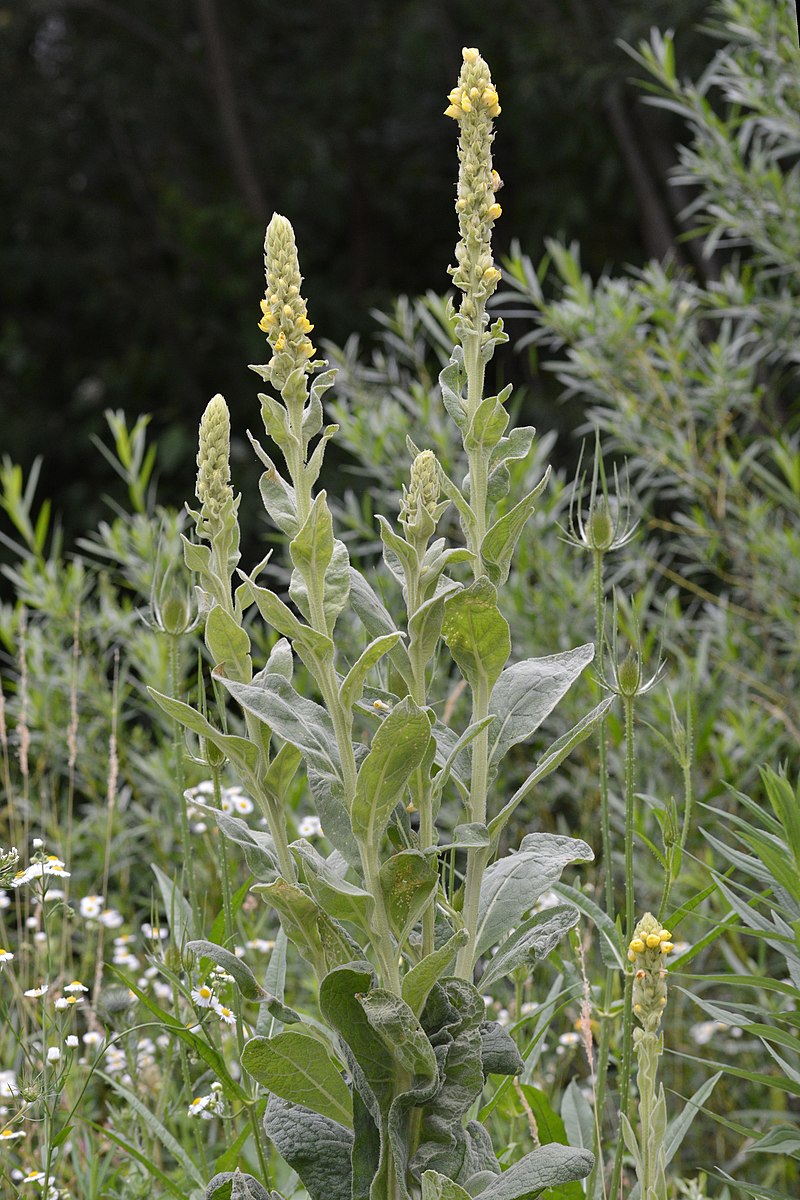I grew mullein once. Accidentally. It suddenly appeared in my garden, probably courtesy of the local birds. They dropped a lot of interesting seeds in my gardens over the years. At first I didn’t know what it was. I always allow strange plants to grow to see what they become.
Mullein is a biennial so it wasn’t until the second year that my patience was rewarded and it bloomed. I couldn’t believe the height of the flower stalk! And so many seeds! Afterwards, I couldn’t believe the longevity of the seeds. No exaggeration, I was pulling up mullein seedlings from my yard for the next ten years.
Mullein (Verbascum thapsus) is a biennial that is native to Eurasia and Northern Africa. European colonists introduced it to North America and Australia. Its habit of freely self-seeding along with the incredible longevity of the seeds has resulted in it becoming an invasive weed in some areas of North America and Australia.
Mullein has a long history of use as a medicinal herb although there is no scientific evidence that any component of the plants has medicinal value. Europeans smoked the leaves for thousands of years to treat pulmonary illnesses. After the introduction of the plant to North American, the Native Americans also smoked the leaves to treat lung issues. They expanded the plant’s uses in powder form to include treatments for athletes foot, skin diseases, rashes and sores.
The Romans used the long flower stalks for torches while other European cultures used the leaves as wicks. The flowers were used for centuries as a dye for both hair and cloth. After its introduction to North America, both the colonists and the Native Americans used the leaves as linings in their shoes to keep their feet warm during the winter.
Mullein is hardy in zones 3 – 9. It prefers full sun and dry soil. The first year, the plant will grow a rosette of fuzzy, gray leaves; some of the leaves reaching 24 inches in length. The second year is when the spectacular flower stalk grows. It can reach heights of up to 6 feet. The flowers which are yellow do not all open at once along the stalk. Only a few bloom at a time. If you can bear to do it, you should remove the flower stalk before it blooms because it produces thousands of seeds that can last in the soil for decades or even up to 100 years.
If you wish to grow mullein in your garden, you can direct sow the seeds in your garden after your last frost. Surface sow them. Do not cover them. They need light to germinate. The seeds will germinate when the soil reaches a temperature of 50⁰F. The germination rate is very low, only about 35%. Don’t get discouraged. Remember, the seeds that didn’t germinate will remain viable in the soil for years and will germinate in time.
The first year, the plants will form their rosettes of leaves. The following year, you can expect the impressive flower stalks. And lots and lots of seeds.

